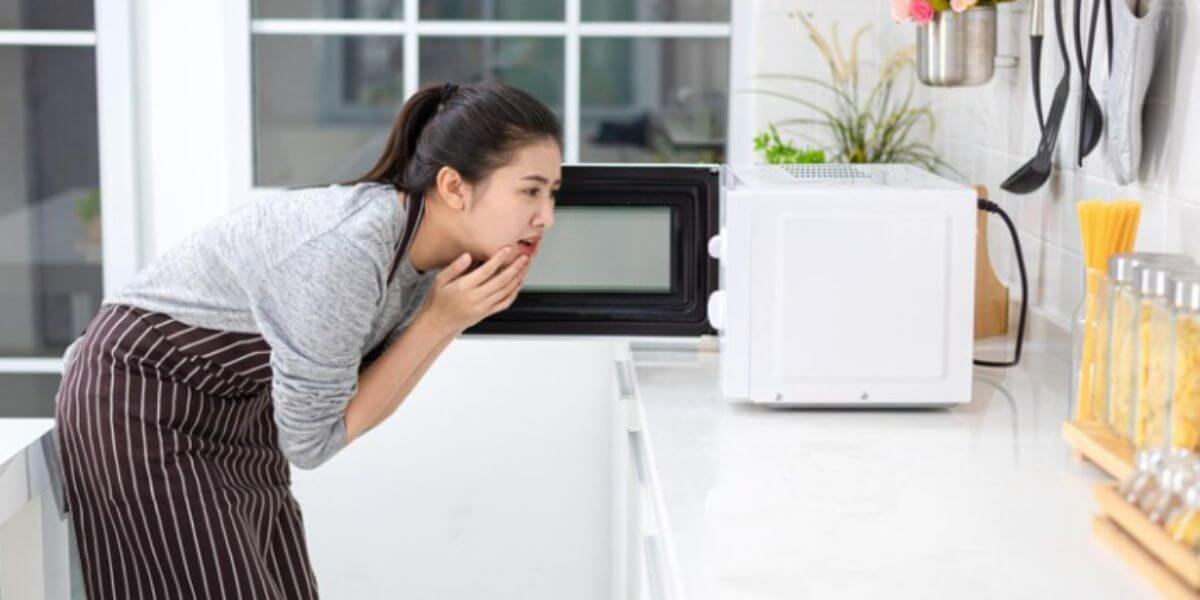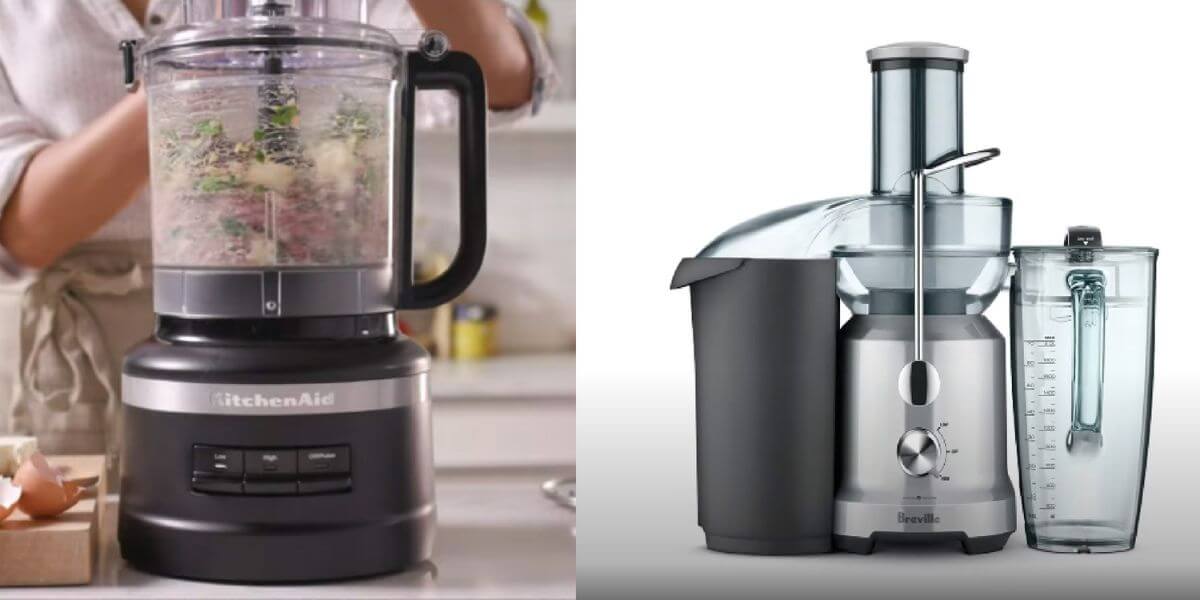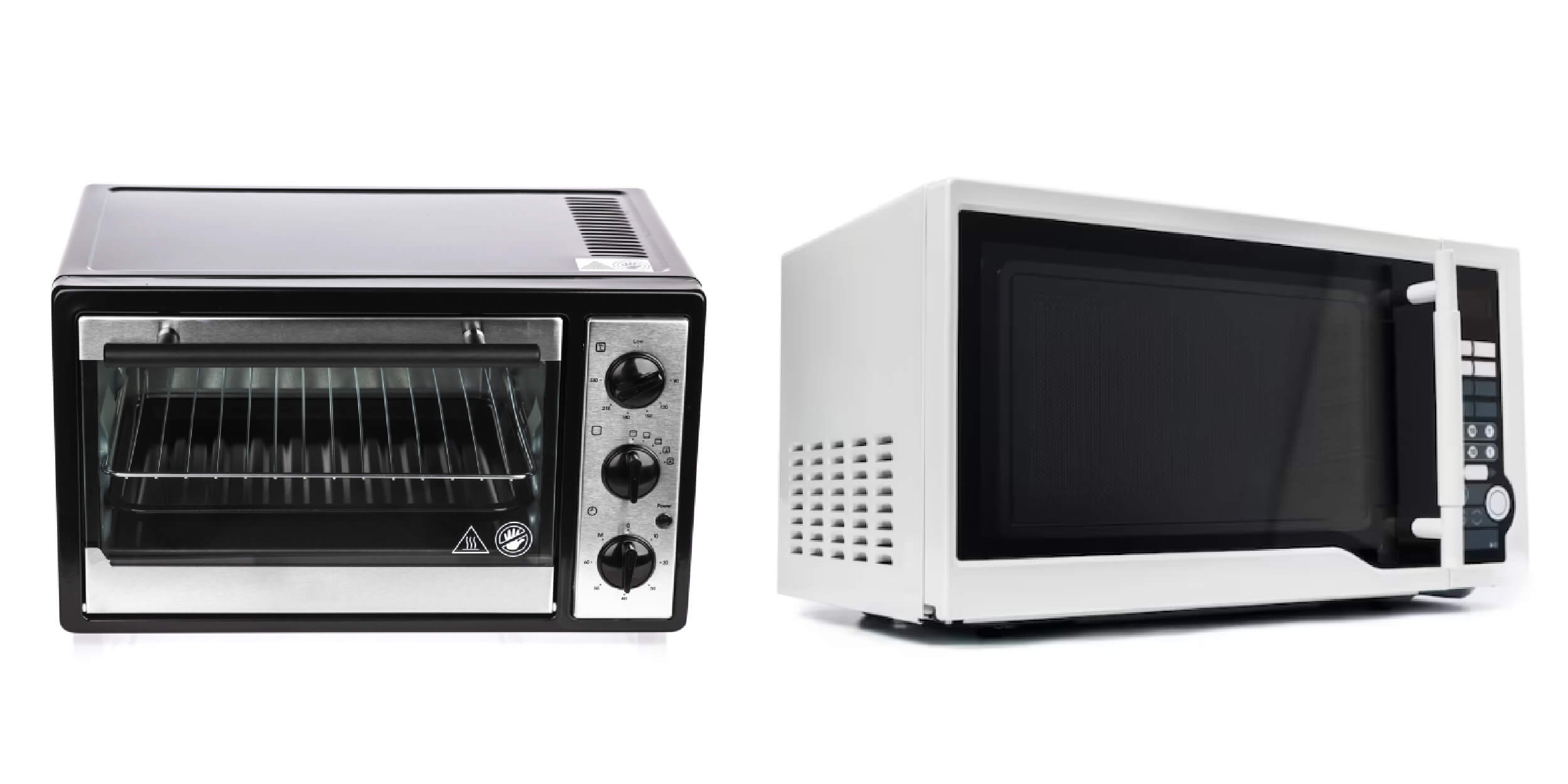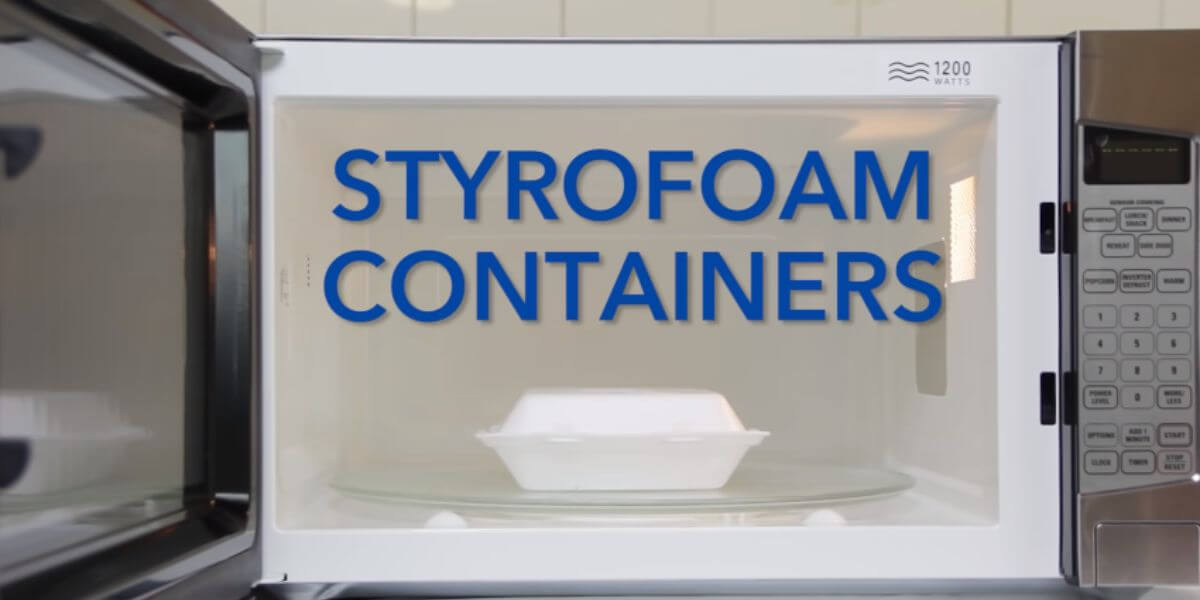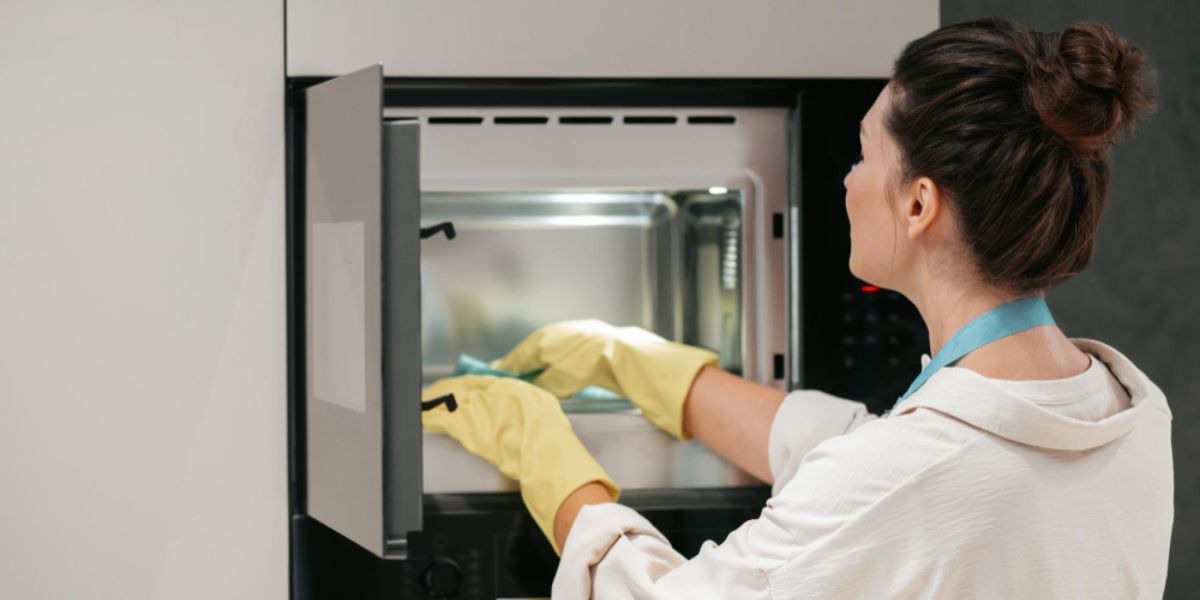Can You Microwave Cardboard? What You Need to Know!
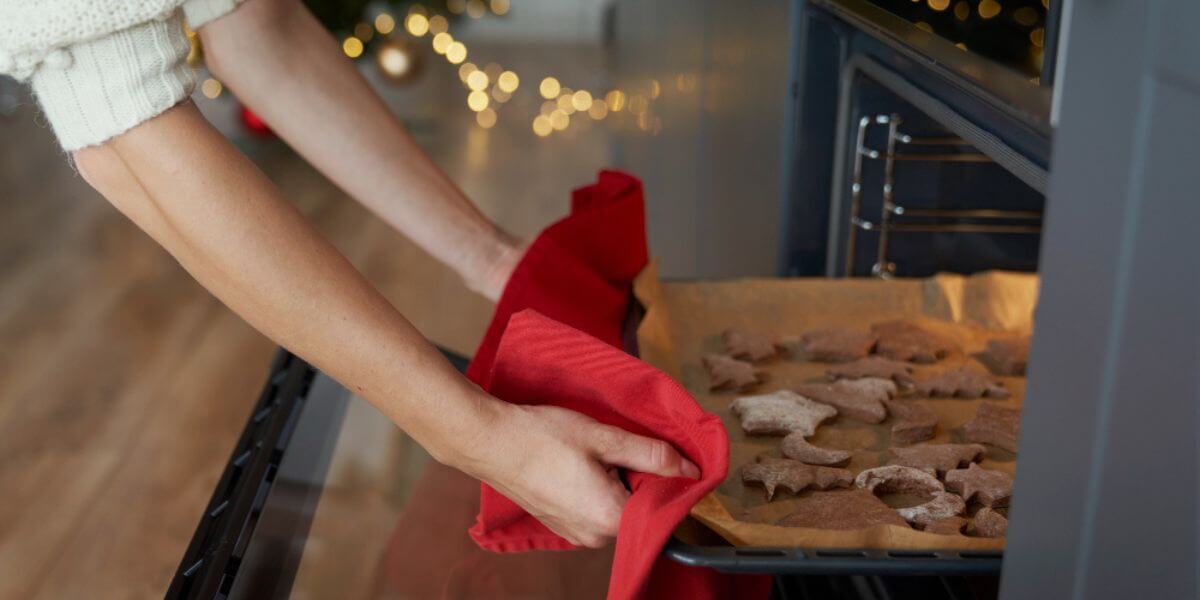

Microwaves have become indispensable in modern kitchens, offering convenience and efficiency when preparing and reheating meals. However, while we rely on microwaves for our cooking needs, it’s essential to be aware of the safe materials in this appliance. Cardboard, a commonly used packaging and shipping material, is often a topic of discussion regarding microwave safety.
This comprehensive guide will thoroughly explore the question “Can you microwave cardboard?” and provide in-depth information to help you understand the risks and safety considerations associated with using cardboard in the microwave.
What is Cardboard?
To understand the interaction between cardboard and microwaves, let’s examine what cardboard is. Cardboard is a type of paperboard that is characterized by its thickness, durability, and sturdiness. It is manufactured by compressing multiple layers of paper pulp, often derived from wood fibers and recycled materials. This results in a strong, eco-friendly material widely used for packaging, shipping boxes, retail displays, and various DIY projects.
Can You Put Cardboard in the Microwave?

The answer to this question is more complex than yes or no. While some cardboard items can be microwaved, others cannot. It depends on the type of cardboard and its composition. Cardboard that is plain, uncoated, and free from metal parts can generally safely use in the microwave. However, it is crucial to follow specific guidelines to ensure safety.
Is It Safe to Microwave Cardboard?
Microwaving cardboard is not considered safe for several reasons. When exposed to microwave radiation, the air pockets present within the cardboard can rapidly heat up. This rapid heating can lead to a variety of potential hazards, including:
Fire Hazard: The cardboard is highly combustible, and when its air pockets heat up excessively, the material can ignite and catch fire. This poses a severe risk to both your microwave and your safety.
Release of Harmful Chemicals: Cardboard often contains adhesives, dyes, and other chemicals used in manufacturing. When subjected to microwaves, these chemicals can leach into the food, potentially causing contamination and health concerns.
Food Contamination: Microwaving cardboard can lead to its disintegration, resulting in small particles mixing with the food. Consuming these particles may be harmful and unpleasant.
Does Cardboard Catch Fire in the Microwave?
Yes, cardboard can catch fire when microwaved. As mentioned earlier, rapidly heating the air pockets within the cardboard can cause the material to ignite. This can happen unexpectedly and pose a severe fire hazard, potentially damaging your microwave and endangering your surroundings.
How Long Can You Microwave Cardboard?
Microwaving cardboard can be a convenient way to warm up certain foods or beverages, but it’s essential to be cautious about the duration to avoid potential hazards. The time you can safely microwave cardboard depends on several factors, such as the type of cardboard, the wattage of your microwave, and the size of the item you are heating. Here are some guidelines to help you determine the appropriate duration for microwaving cardboard:
Start with Short Intervals: When microwaving cardboard, it’s best to start with short intervals, such as 15-30 seconds. This allows you to assess how the cardboard reacts to the microwave’s heat without risking overheating.
Check Frequently: During the microwaving process, check the cardboard frequently. This will help you monitor changes in the cardboard’s appearance or temperature.
Low to Medium Heat Settings: To minimize the risk of overheating, use the microwave on low to medium heat settings when microwaving cardboard. High heat levels can cause the cardboard to catch fire.
Consider the Thickness: Thicker cardboard may require slightly longer microwaving time, but it’s crucial to be cautious and not exceed recommended intervals.
Avoid Prolonged Microwaving: It is not suggested to microwave cardboard for an extended period. It’s best to stop and check the cardboard frequently if you need clarification about the appropriate duration.
Heed Manufacturer’s Instructions: If you use pre-packaged food containers made of cardboard, refer to the manufacturer’s instructions for microwaving times. Follow their recommendations for safe usage.
Cut into Smaller Pieces: When microwaving a large piece of cardboard, consider cutting it into smaller sections. This will help ensure more even heating and reduce the risk of overheating.
Remember that cardboard is flammable and contains cellulose, a substance that can ignite when exposed to high heat. For this reason, it’s essential to exercise caution and avoid using high-heat settings when microwaving cardboard.
Tips and Tricks to Microwave Cardboard
While using cardboard in the microwave for cooking or heating food is not advisable, there are alternative ways you can use cardboard safely in this appliance. For instance:
Use Uncoated Cardboard: Always use plain, uncoated cardboard in the microwave. Coatings or glossy finishes may contain chemicals that are not microwave-safe.
Avoid Metal Parts: Ensure the cardboard has no metal components or staples, as they can cause sparks and damage the microwave.
Cut into Smaller Pieces: If microwaving a large piece of cardboard, consider cutting it into smaller sections to ensure even heating and reduce the risk of overheating.
Place a Microwave-Safe Cover: Place a microwave-safe cover or paper towel over the cardboard to contain any potential mess or splatters.
Monitor the Microwave: Never leave the microwave unattended when microwaving cardboard. Keep a close eye on the process to prevent any mishaps.
When You Shouldn’t Microwave Cardboard
While microwaving cardboard can be safe when done correctly, there are situations where it is best to avoid it altogether:
Wet or Damp Cardboard: Microwaving wet or damp cardboard can create steam, which can weaken the material and cause it to collapse.
Oily or Greasy Cardboard: Cardboards that come into contact with greasy or oily substances may catch fire or release unpleasant odors.
Colored Cardboard: Colored cardboards may contain dyes or inks that are not microwave-safe. Stick to plain, uncolored cardboard.
Cardboard with Tape: Cardboard boxes sealed with tape should not be microwaved, as the tape can contain metal.
Microwaving for Too Long: Avoid microwaving cardboard for extended periods, as it can increase the risk of overheating and fire.
Conclusion
In conclusion, it is unsafe to microwave cardboard due to the risks of fire, the release of harmful chemicals, and the potential food contamination. Always prioritize safety and look for microwave-safe symbols on materials before using them in the microwave. If you must use cardboard, consider alternative uses that do not involve direct exposure to microwaves radiation.
Frequently Asked Questions
Can I microwave cardboard for cooking or heating food?
No, it is not safe to microwave cardboard for cooking or heating food due to the risk of fires and harmful chemical release.
Can cardboard catch fire in the microwave?
Yes, cardboard can catch fire in microwaves due to the rapid heating of air pockets within the material.
Is there any safe way to use cardboard in the microwave?
While microwaving cardboard for cooking is unsafe, you can use dampened cardboard to retain moisture when reheating certain foods.
What happens if I microwave cardboard with metallic elements?
Microwaving cardboard with metallic elements, such as staples or tape, can cause sparks and pose a fire hazard.
Can microwaving cardboard release harmful chemicals?
Yes, microwaving cardboard can release harmful chemicals into the food, making it unsafe for microwave use.
